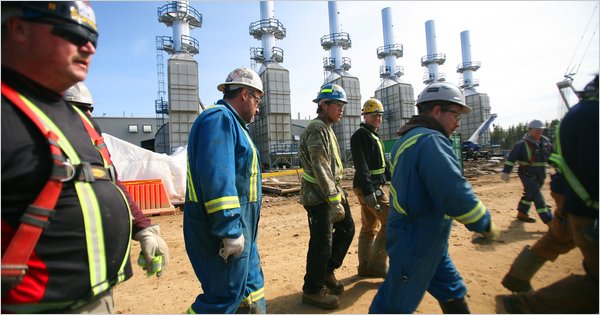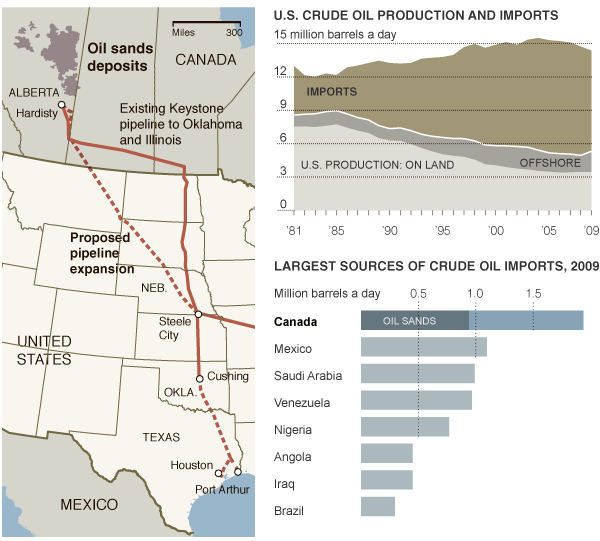The Gulf blowout makes Canadian oil sands look more acceptable
 Wednesday, May 26, 2010 at 12:08AM
Wednesday, May 26, 2010 at 12:08AM 
The gist from NYT story:
Oil sands are now getting more scrutiny as the Obama administration reviews a Canadian company’s request to build a new 2,000-mile underground pipeline that would run from Alberta to the Texas Gulf Coast and would significantly increase America’s access to the oil. In making the decision, due this fall, federal officials are weighing the environmental concerns against the need to secure a reliable supply of oil to help satisfy the nation’s insatiable thirst.
The gulf accident adds yet another layer of complexity. Regulators and Congress are weighing new limits on drilling off the coastline after the Deepwater Horizon catastrophe, increasing the pressure to rely more heavily on Canada’s oil sands. At the same time, political consciousness of the risks has grown.
Canadian oil sands are expected to become America’s top source of imported oil this year, surpassing conventional Canadian oil imports and roughly equaling the combined imports from Saudi Arabia and Kuwait, according to IHS Cambridge Energy Research Associates, a consulting firm.
In a new report, it projects that oil sands production could make up as much as 36 percent of United States oil imports by 2030.
 I recently was harassed, congenially enough, by an older guy from the investment world (after a talk) who was convinced the US imported 19mbd and that 9-10 came from Saudi Arabia alone, therefore the PG was THE source of US oil. I run into such ill-informed notions all the time, when the truth is the PG ranks after Africa after LATAM after NORTHAM after the US (or 5th place overall).
I recently was harassed, congenially enough, by an older guy from the investment world (after a talk) who was convinced the US imported 19mbd and that 9-10 came from Saudi Arabia alone, therefore the PG was THE source of US oil. I run into such ill-informed notions all the time, when the truth is the PG ranks after Africa after LATAM after NORTHAM after the US (or 5th place overall).
The Chinese have announced more investments in the Canadian sands fields, making you wonder if the US isn't eager to lock down a certain amount of access while the getting is good--and the enviro damage is "over there."










Reader Comments (2)
Excellent entry. Must correct some stats though. Total crude imports from Canada in 2009 were about 2.5Mb/d, exceeding Mexico and Venezuela combined (Venezuela around 1.2Mb/d, Mexico just under 1.3Mb/d). That's per the EIA. Your chart suggests a much lower number for Canada.
As you astutely note, Saudi, and the Middle East in general, are really secondary sources for the US. Also noteworthy is that US domestic production actually ROSE year over year in 2009, due primarily to US deepwater Gulf of Mexico production (Chevron's Tahiti project a big contributor), but also interestingly the Bakken in North Dakota, which is now a major oil producing state.
Heavy oil imports from Mexico and Venezuela are likely to continue to fall, and there is a lot of complex refining capacity in the US Gulf Coast, so all of that Canadian heavy oil and bitumen will find a home there once Keystone XL is completed.
Where would domestic production show up on this chart?